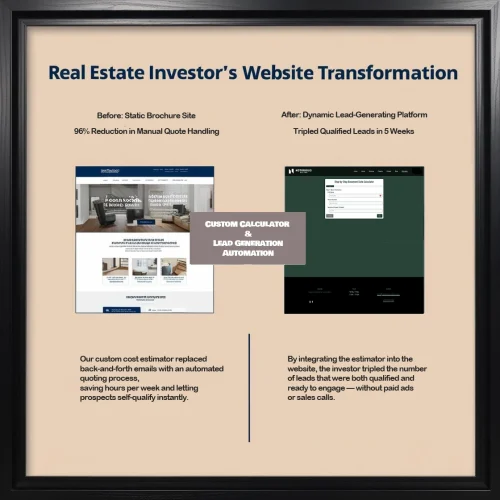In the world of no-code automation, two tools dominate the conversation: Zapier and Make (formerly Integromat). If you’re trying to figure out which one to use for your business or freelance setup, you’re not alone. I’ve used both for real client projects — and in this post, I’ll break down what each one does well, where it struggles, and when to use one over the other.
What is Zapier?
Zapier is one of the most well-known automation platforms on the internet. It allows you to connect over 5,000 apps — everything from Gmail and Slack to WordPress, Trello, Google Drive, and Stripe. The goal is simple: create “Zaps” that trigger actions when something happens.
For example: if someone fills out your form, Zapier can send you a Slack message, create a Google Sheet entry, and email the lead — all in seconds.
Zapier Strengths
- ✅ Beginner-friendly interface
- ✅ Massive app library
- ✅ Fast to set up basic workflows
- ✅ Great for marketing automation
Where Zapier Falls Short
- ❌ Expensive at scale
- ❌ Limited logic without paying for higher-tier plans
- ❌ No visual interface (form-based only)
What is Make (formerly Integromat)?
Make is a powerful automation platform that focuses on flexibility and control. While Zapier uses forms, Make uses a visual canvas that lets you drag, drop, and connect apps like a flowchart. It can handle complex logic, loops, filters, and conditional branching right out of the box — even on the free plan.
Make Strengths
- ✅ Visual interface (flowchart-style)
- ✅ Advanced logic, filters, and loops
- ✅ Affordable for power users
- ✅ Supports APIs and custom HTTP calls
Where Make Falls Short
- ❌ Learning curve is steeper than Zapier
- ❌ Some integrations are less polished
- ❌ Requires more testing and planning
Head-to-Head Comparison
| Feature | Zapier | Make |
|---|---|---|
| Interface | Form-based | Visual canvas |
| Ease of Use | Beginner-friendly | Better for power users |
| Logic & Branching | Only with Paths (paid) | Full logic tree by default |
| App Support | More native integrations | More flexible, supports APIs |
| Pricing | Free, but limited — paid tiers can get expensive | Free tier is generous — great value |
Which One Do I Use?
I use both — and that’s the honest truth.
Zapier is perfect for quick jobs: onboarding a client, sending a welcome email, posting to Slack, or syncing simple data. It’s my go-to for clients who want fast results without much customization.
Make is my choice when I need control. If the project involves conditional logic, multiple apps, or custom API calls — Make handles it like a pro. It’s a developer’s dream with a no-code UI.
When Should You Use Zapier?
- 🟢 You’re new to automation
- 🟢 You want quick integrations without learning curves
- 🟢 You only need 1–3 steps per workflow
- 🟢 You don’t want to touch APIs or complex setups
When Should You Use Make?
- 🟢 You need conditional logic, filters, or loops
- 🟢 You’re connecting 3+ tools or APIs
- 🟢 You want full control of how and when actions trigger
- 🟢 You’re building something to scale
Want Me to Build It for You?
Not sure which tool to use — or just want it done right? I build custom automation workflows using both Zapier and Make for creators, freelancers, and small teams.
Final Thoughts
If you’re serious about saving time, avoiding mistakes, and scaling your workflows — pick a tool that fits your needs. Both Zapier and Make are incredible platforms. The key is knowing when to use which one… and if you want help, I’ve got you covered.







